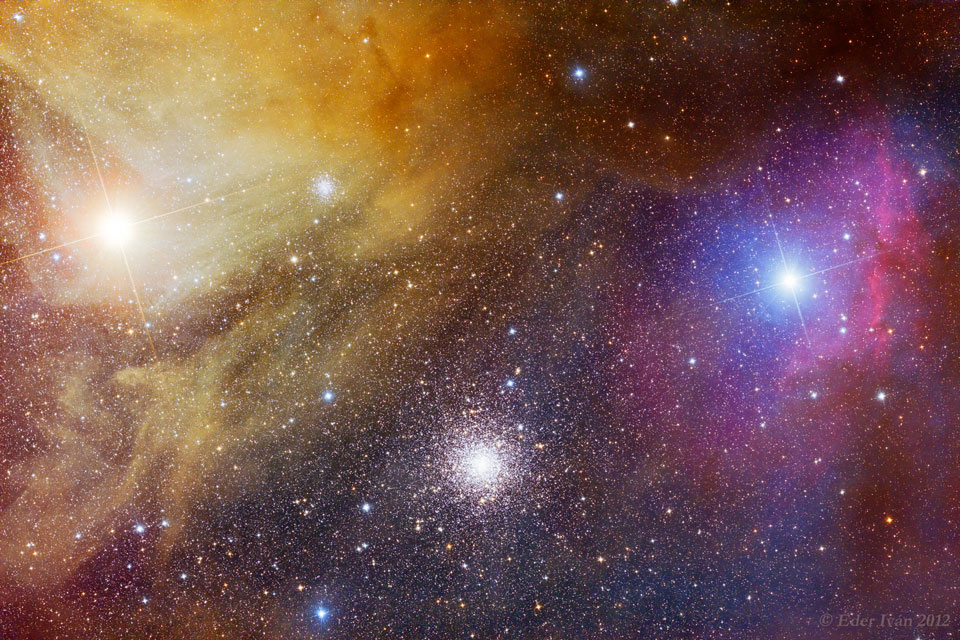A recent observation of the
red giant—the largest in the constellation Scorpio—shows that from its cosmic
depths, the star is expelling unknown matter as it approaches the end of its
life. In the insides of the star Antares lies a powerful and hitherto unknown
force that astronomers have not seen until now.
(Updated version of the previous article.)
Someday, sooner or later,
the sun we see every day will become a giant star and grow to such an extent
that it will swallow the Earth and other planets in the inner solar system. For
scientists, this inescapable fate involves the challenge of looking beyond our
solar system to decipher and understand the evolutionary cycles of these
incandescent stars and their mechanisms at each stage.
In order to find out as much
as we can about stars and red giants, a new study, supervised by Keiichi Ohnaka,
a researcher at Chile’s Universidad Católica del Norte (UCN), attempts to
understand how and why the red supergiant Antares can expel so much matter off
its surface as it nears the end of its life and nears its finale as a
spectacular supernova.
The enormous size of
Antares, 883 times greater than the sun, makes it the ideal candidate for the
study of what could happen one day to our Sun, and eventually the Earth as our
star grows.
Antares is also known as
Alpha Scorpii, which means it is the brightest star in the constellation
Scorpio. Red in color, it is visible in the night skies of August. In an
interview with Space.com, Professor Ohnaka said: “With this study, we can open
a new window to observe stars other than the sun … in a similar way that we
observe the sun. We can then apply this technique to investigate other problems
— not only supergiants, like Antares but also other types of stars and other
unsolved problems.”
The team of astronomers led
by Keiichi Ohnaka published in the journal Nature a study that presents a new
vision of the supergiant.
For their observations,
scientists used the VLT observatory, a system of four telescopes measuring
eight meters each, capable of working in combination as a single instrument,
making it the largest optical telescope in the world (hence its name: Very
Large Telescope ‘, or VLT).
The behavior of the spectrum
of CO emissions allowed astronomers to estimate the density and velocity of
Antares plasma flows. And it is at that point that they were caught off guard
noticing something totally weird: the density is significantly higher than
expected. This means that the substance expelled from the depths of the star to
its surface is quantitatively far superior to what was thought possible
according to previous concepts.
Comparison of sizes between
Antares and the Sun. The black circle represents the size of the orbit of Mars.
At the moment, this can only
be interpreted like this: in the insides of the star Antares lies a powerful
and hitherto unknown force that astronomers have not seen until now. This study
was presented in the Journal Nature and can be accessed by clicking here.

